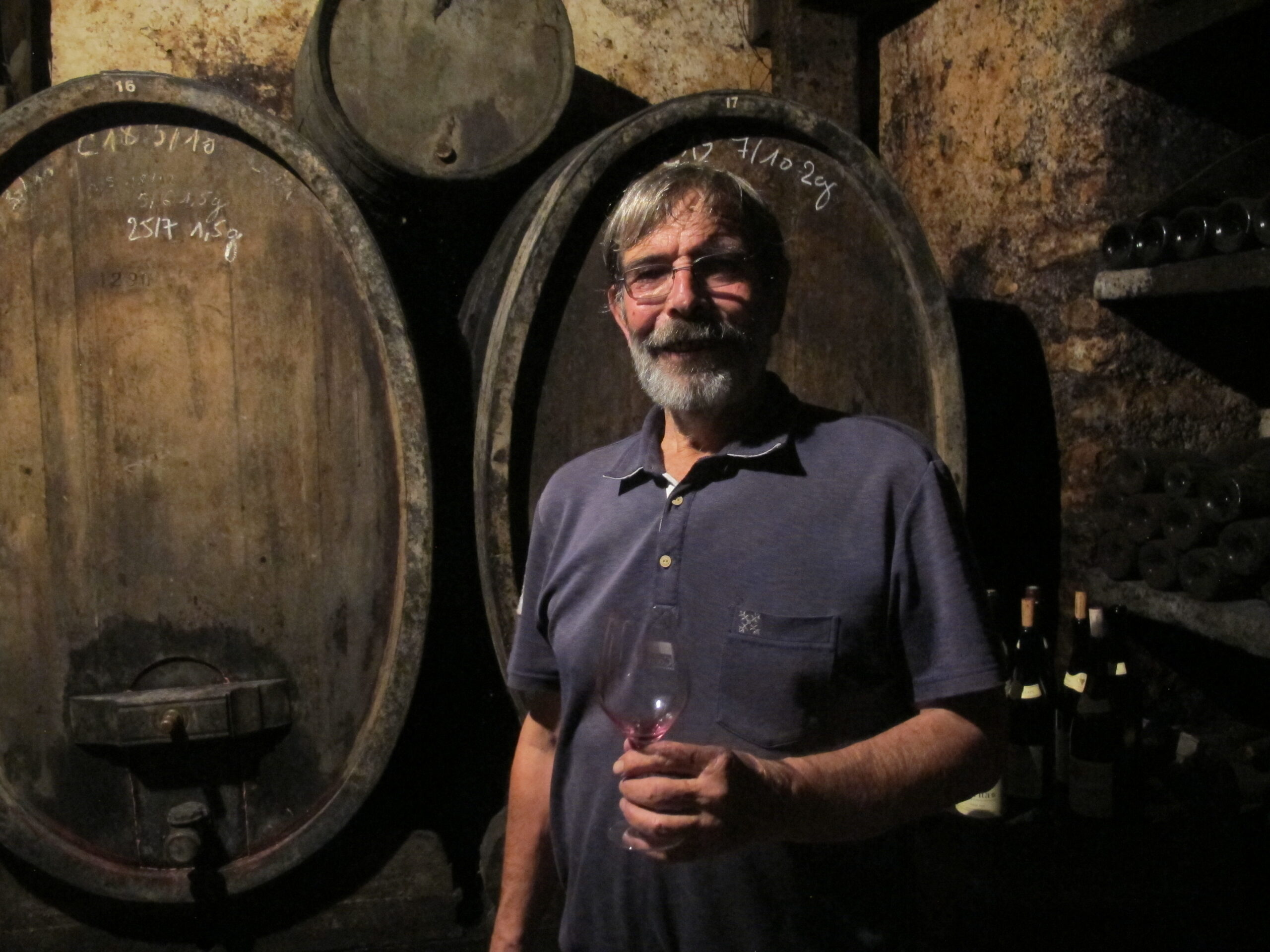Interview with Pierre Clape, Domaine Clape, Cornas

Interview with Pierre Clape, 9th March 2020 at Domaine Clape.
Edited for clarity and brevity.
The history of Cornas is less well known than that of Côte-Rôtie or Hermitage, why is that?
I think because it’s less well documented, we just don’t have that many documents. The first we have that mentions Cornas is from the 1760s, a village priest writes that when he arrived in the village, the whole hillside was planted with vines, and it gave ‘a very good black wine’! And we’re on an ancient Roman road here with a few Roman villas along the way. People have found relics, but nothing that points specifically to winemaking.
So it’s possible that Cornas has the same long history as Côte-Rôtie and Hermitage?
I think as long as Côte-Rôtie, and probably as long as Hermitage. More recently, phylloxera passed through here and the vineyard was almost totally destroyed, practically nothing remained. But it was replanted straight away by grafting. The whole of Cornas was rapidly replanted, all the slopes, we have terraces on Reynard that date back to 1890, 1900, with vines of the same age. The walls were rebuilt with stone that came from much higher up, not granite from Cornas, much harder granite from further away.
Was it always just Syrah planted here?
Before phylloxera? Yes. And after they planted a bit of Alicante Bouschet – grapes that are quite productive and deeply coloured, and Grand Noir too, that’s quite close to Dureza. At the start of the First World War, they produced 12,000hl a year in Cornas – today we get to 4 or 5,000hl in very good years! It gives you an idea of the work that was required to replant all those vines. The decline started after the First World War, and really the big decline happened after the Second World War… With the Marshall Plan the economy restarted and there was an enormous amount of work in Valence. Working in wine didn’t bring in enough money, it was very poorly paid, people couldn’t afford to eat. Wine was superfluous.
My dad arrived here in 1949. He said a kilo of wheat on the plain was more expensive than a litre of wine from the slopes. So, bit by bit, they were abandoned. People found the work too hard, and there was plenty of work in Valence. And it continued to decline, the surface area went down to 50ha in 1955, 1960. A few vignerons stayed, which was the case in a lot of Rhône appellations, like Georges Vernay in Condrieu.
Who were the most notable vignerons that stayed here?
There was Robert Michel’s dad, Joseph Michel. There was the Voge family. Marcel Juge. My dad [Auguste Clape]. Jean Lionnet.
When did bottling start?
My great-grandfather bottled a little bit, but just for himself, around 1906. But it was with the Marché aux Vins, that started in 1955 or 1956. Georges Bessenay was an accountant but he also had vines and really believed in Cornas, he started the market. At the time he also found a few vignerons in Crozes, Saint-Joseph, and everyone bottled the contents of a barrique, they didn’t know if they’d sell it or not. But they practically all sold all their wine. And next year they bottled a bit more, and so on. And every market served to get Cornas a bit better known, and also the neighbouring appellations of Crozes and Saint-Joseph.
And now you can find Cornas for 100€. Was there a time when the prices started to go up quickly?
The 1990s… 1986? My first vintage was in 1988, and prices then were still quite sensible, then they started going up a bit in Hermitage, Cornas, certain slopes in Saint-Joseph – it’s expensive to produce on the hillsides, so they had to, otherwise it’s not worth it!
What caused the price increases?
We didn’t have negociants here like in Tain L’Hermitage who help to ‘pull the plough’. Things started a bit from export, with the first edition of John Livingstone-Learmonth’s book, I think it was 1978, he helped Rhône wines get better known further afield, it was published in the United States and Northern Europe. It was at that time, ’78, ’80, that we saw people arriving with John’s book under their arms!
To buy a copy of my latest book, Wines of the Rhône, please click here.

